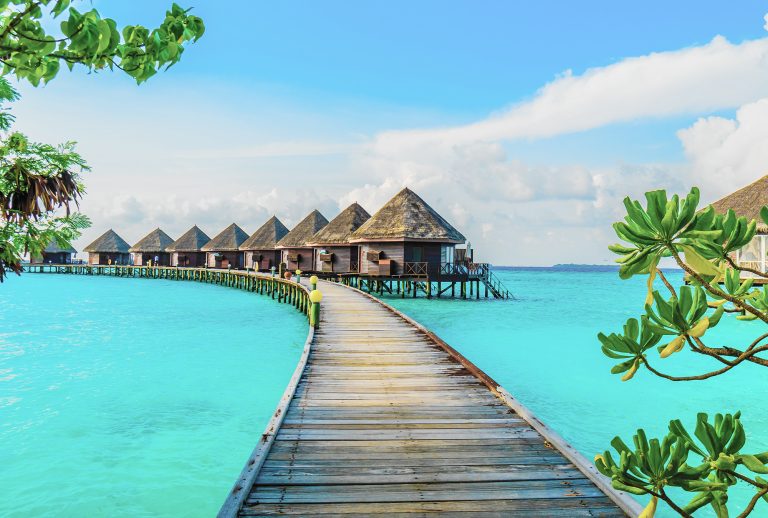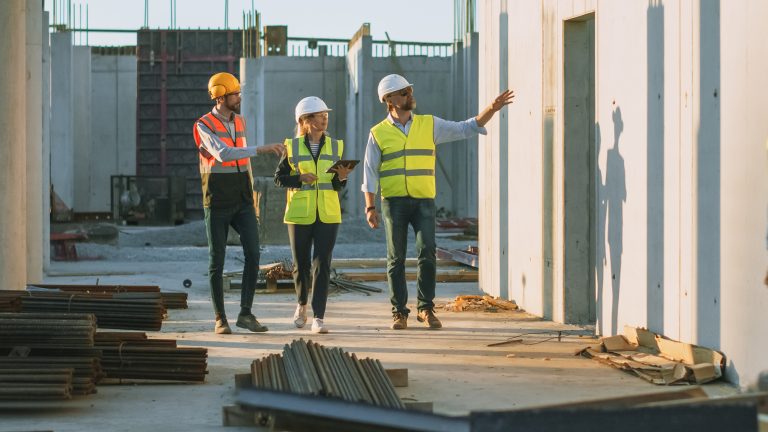The kingdom is home to a diverse range of habitats and extraordinary biodiversity. The Red Sea’s marine ecosystem boasts 266 distinct species of coral and over 1,230 species of fish, many of which are found nowhere else in the world. The region also serves as a critical habitat for hundreds of migratory bird species and unique desert flora and fauna. This ecological richness offers Saudi Arabia a competitive advantage—one that, if protected and promoted, can position the kingdom as a leading destination for eco-conscious travellers.
However, the challenge lies in that large-scale tourism development can potentially impact the environment. The construction of hotels, attractions, and entire tourism ecosystems—including restaurants, shopping malls, and infrastructure—must be handled with care to ensure minimal disruption to the kingdom’s natural assets. As Saudi Arabia’s construction sector pushes forward with these projects, there is a pressing need to prioritise ecologically responsible building practices and nature-based solutions to manage the potential impacts on the valuable biodiversity and eco-tourism in the kingdom.
The nuances of nature
The Middle East’s construction sector has made great strides in integrating cost efficiency and sustainable building practices. However, ecological considerations present a distinct set of challenges that require tailored approaches. Unlike energy efficiency or carbon footprint reduction, protecting biodiversity and natural habitats demands a more location-specific strategy. The kingdom’s unique desert and marine environments necessitate a balance between progress and preservation. This requires an understanding of local ecosystems, stringent environmental assessments, and the adoption of innovative construction techniques that mitigate long-term harm.
To ensure responsible development, the kingdom’s developers should focus on three key strategies that will help minimise ecological impact while advancing their ambitious tourism goals under Saudi’s eco-tourism.

One of the most effective ways to mitigate environmental impact is through nature-positive design—an approach that enhances rather than disrupts the surrounding ecosystem. This means considering the land’s natural features before breaking ground, ensuring developments are designed to complement the environment rather than replace it.
For instance, The Red Sea Project has committed to a 100% renewable energy model while ensuring that only 1% of the project’s total area is developed. Similarly, luxury hospitality projects are adopting floating villas and elevated boardwalks to avoid damaging marine habitats and coastal dunes. By embedding sustainability into the initial design process, developers can create spaces that coexist with their surroundings rather than overpower them.

Saudi Arabia’s coastline and desert landscapes are highly sensitive to external disruption. This fragility is highlighted in a National Geographic study, sponsored by ARAMCO, which warned that ‘warmer temperatures, development, dredging, pollution, industrialisation, and heavy fishing have taken their toll on reef health across the kingdom’. Construction in these areas must therefore be carefully planned to avoid harming fragile ecosystems. One of the major concerns is the impact of dredging and coastal modifications, which can disturb coral reefs, disrupt marine life, and accelerate erosion.
To counter this, several giga-projects are implementing advanced environmental monitoring systems to track the health of ecosystems in real time. The AMAALA project, for example, is leveraging artificial intelligence to monitor and manage marine biodiversity, ensuring that the impact of development remains within sustainable limits. On land, measures such as wildlife corridors and low-impact construction methods are being employed to protect migratory species and preserve natural habitats.
It is also important that indirect impacts are taken into account when considering project impacts. For example, the impacts of water and power infrastructure that supply these projects, which have their own set of impacts on the environment, should be considered.
Another critical factor is the consideration of cumulative impacts, not just at the individual project level but across development projects and at a regional scale. What are the impacts of all the coastal projects being planned and constructed concurrently? What are the impacts on the fragile desert environment where multiple hospitality or tourism projects are proposed within the same geographic region?
Project-specific Environmental Impact Assessments have a limited ability to consider wider, cumulative impacts. This can be achieved through Strategic Environmental Assessment, which should become standard practice for eco-conscious giga project developers who wish to understand the cumulative impacts of their projects, along with projects and programs of a similar nature in the same area.

The materials used in large-scale construction projects have significant environmental implications. Choosing sustainable materials—such as recycled steel, low-carbon concrete, and responsibly sourced timber—can drastically reduce a project’s ecological footprint, which would also help minimise Saudi Arabia’s eco-tourism footprint. Additionally, effective waste management strategies are essential to prevent construction debris from polluting surrounding environments.
Developers across the kingdom are increasingly turning to circular economy principles to reduce waste. Neom’s The Line, for example, has committed to a zero-waste approach, where construction materials are repurposed or recycled wherever possible. This not only minimises ecological damage but also aligns with broader sustainability goals by reducing reliance on finite resources.
The Logical Choice
By embedding ecological stewardship into its tourism developments, Saudi Arabia is not just protecting its natural assets—it is creating a lucrative draw for environmentally conscious travellers. The global tourism industry is seeing a surge in demand for sustainable travel options, and by positioning itself as a leader in environmentally-responsible tourism, the kingdom stands to benefit both economically and reputationally.
Furthermore, prioritising ecologically conscious construction positions the kingdom as a global leader in its commitment to sustainability and innovation. With the right expertise and a clear vision, balancing rapid development with environmental responsibility is not just possible—it is a strategic advantage. The kingdom’s eco-tourism boom need not come at the expense of its ecological treasures; instead, it can showcase how economic growth, and environmental stewardship can go hand in hand.
AESG is an international Consultancy, Engineering and Advisory firm committed to driving sustainability in the built environment and beyond. With the highest calibre leadership team in our field, we pair technical knowledge with practical experience to provide hands-on, bespoke strategic solutions to our clients. We have one of the largest dedicated specialist consultancy teams working on projects within the building, urban planning, infrastructure and strategic advisory sectors. With decades of cumulative experience, our team offers specialist expertise in sustainable design, sustainable engineering, MEPF, fire and life safety, façade engineering, commissioning, digital delivery, waste management, environmental consultancy, strategy and advisory, security consultancy, cost management and acoustics. Our prestigious portfolio demonstrates our extensive capabilities and our ability to consistently deliver best in class solutions to some of the industry’s most complex technical challenges.

Director of Environment, AESG
Brent Ridgard joins AESG as Director of Environment. Brent has an impressive background with over 25 years of experience in the environmental industry. His most recent role was as the National Director of Environmental Assessment & Planning at WSP in Australia, where he was responsible for overseeing complex environmental projects across various sectors, including property and development, infrastructure, industrial, mining, and power generation. Prior to this, Brent was the Middle East Director of WSP Environment and Energy from 2005 to 2013, overseeing WSP’s Environment, Sustainability, Climate Change and Energy services in the region. Leading a multidisciplinary team, Brent was the project lead for Dubai’s Green Building Regulations in 2008 and has strong regional experience in both Environment and Sustainability.
Brent’s career has been marked by his expertise in environmental and social impact assessment, strategic environmental assessment, environmental management, permitting, compliance, monitoring, due diligence, and risk assessment. He has successfully led high-performing teams in Africa, the Middle East, and Australia, fostering a culture of collaboration, excellence, and camaraderie. Brent is known for his strong leadership, technical acumen, and exceptional project management skills. His vision for nurturing a collaborative and innovative environment aligns perfectly with AESG’s values and goals. We are confident that Brent will be a great addition to our team and will help us continue to excel in our environmental leadership.
Read the original article here
For further information relating to specialist consultancy engineering services, feel free to contact us directly via info@aesg.com

ISO 27001:2022
ISO 9001:2015
ISO 14001:2015
ISO 45001:2018
601-608
The offices at Ibn Battuta Gate,
Jebel Ali 1-Village
PO Box 2556
Dubai, United Arab Emirates
305 Mermaid House
2 Puddle Dock
London, EC4V 3DS
United Kingdom
T / +44 (0) 208 037 8762
Haibu Space, Abu Dhabi Mall
1st floor, Office 37
Tourist Club Area
Abu Dhabi, United Arab Emirates
T / +971 (0) 2 201 2527
9391 Wadi Al Thummamah
2444 Al Olaya District
PO Box 12214
Riyadh, Kingdom of Saudi Arabia
T / +966 (0) 112 278 288
111 Somerset Road
#08-10A, 111 Somerset
Singapore 238164
11th Floor, Office 1101
2 Long Street
Cape Town 8000
Western Cape, South Africa
T / +27 (0) 21 137 6444
8 Parramatta Square
49th Floor, Office 117
Parramatta, Sydney
New South Wales 2150
Australia
T / +61 (0) 2 8042 6817
Regus Rialto, West Podium
Level Mezzanine 2 (M2)
525 Collins Street
Melbourne, Victoria 3000
Australia
Regus Egypt, East Lane
1st Floor, Office 130
Plot number B-340
New Cairo 1
Cairo Governorate 4740003
Egypt
Office 37, Haibu Space
1st floor, Abu Dhabi Mall
Tourist Club Area
Abu Dhabi, United Arab Emirates
T / +971 (0) 2 201 2500
9391 Wadi Al Thummamah
2444 Al Olaya District
PO Box 12214
Riyadh, Kingdom of Saudi Arabia
T / +966 (0) 112 278 288
111 Somerset Road
#08-10A, 111 Somerset
Singapore 238164
WeWork, 80 Strand St
Cape Town City Centre
Cape Town, 8001
South Africa
T / +27 21 137 6444
49th Floor, Office No.117
8 Parramatta Square
Parramatta, Sydney
New South Wales 2150
Australia
T / +61 (0) 2 8042 6817
Regus Rialto, West Podium
Level Mezzanine 2 (M2)
525 Collins Street
Melbourne, Victoria 3000
Australia
Enawalks, 4th Floor, Office 417
Leaders International College Road
2F97+6VJ New Cairo 1
Cairo Governorate 4724242
Egypt
T / +20 15 01692187